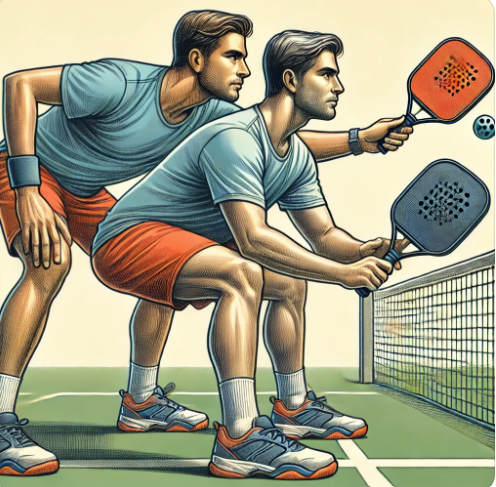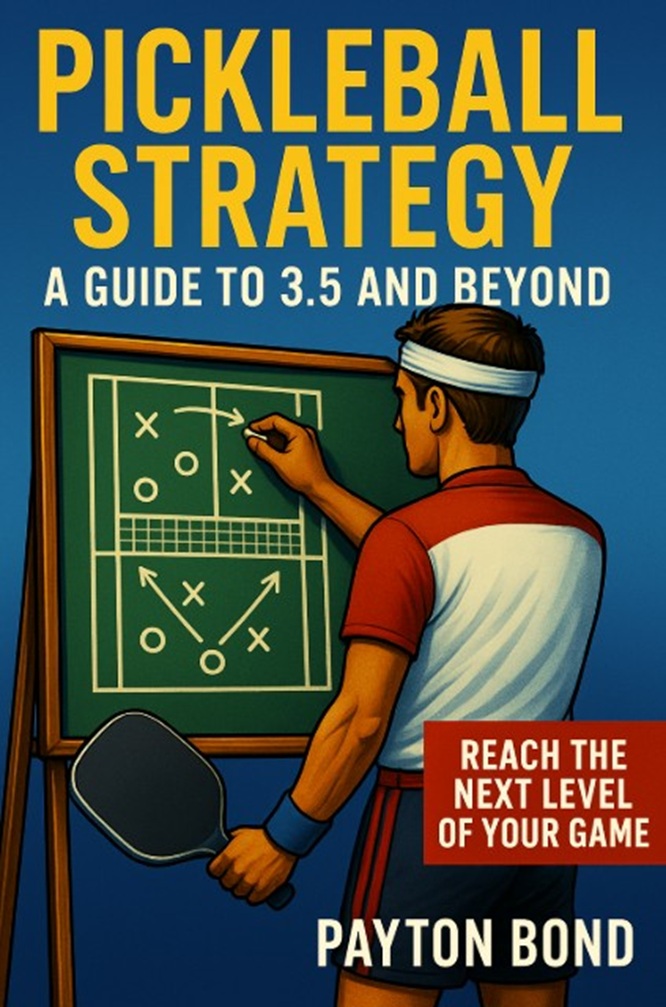
Pickleball Serve Stacking: Take Control of the Court
Serve stacking in pickleball isn’t just a fancy term—it’s a game-changing strategy that helps you dominate doubles by putting your strongest forehand smack in the middle of the court. To be competitive at higher levels you need to use stacking.
Why Use Serve Stacking in Pickleball?
Without serve stacking, you’re leaving your team vulnerable to opponents exploiting the center of the court, forcing backhand responses under pressure. Here’s why serve stacking is worth mastering:
- Play to Your Strengths: Put your strongest player (or strongest forehand) in the best possible spot to handle the third shot.
- Neutralize Returns: A forehand in the middle makes it harder for opponents to exploit the center of the court.
This strategy works for all teams, whether you’ve got one righty and one lefty, or two players looking to maximize their offensive potential.

The Problem Without Serve Stacking
Imagine your team lined up without stacking with a right-handed server and left-handed partner. There is no forehand in the middle to play the third shot.
It’s like giving your opponents a gift-wrapped opportunity.
Advanced players won’t hesitate to take advantage, they will always hit the serve return up the middle in this scenario to force a backhand response.
How to Stack Effectively on the Serve
Serve stacking is all about adjusting your positions without losing track of the serve rotation. Here’s how it works:

Starting Positions:
- Player A (Right-Handed): Stands on their normal serving side.
- Player B (Left-Handed): Moves to the opposite side of the court, standing behind Player A.
Movement After the Serve:
- Player A: Serves, then shifts to the opposite side of the court to take Player B’s position.
- Player B: Moves forward to their designated spot, ensuring their forehand now dominates the middle.
Stay on Top of Serve Rotation:
The serve order doesn’t change, but keeping track of who’s serving and which side is critical. Practice this to avoid confusion—or, worse, penalties.
Advantages of Serve Stacking
Here’s what serve stacking does for your team:
- Forehand Control: Puts the forehand where it matters most—in the middle.
- Stronger Returns: Handles center-court shots with ease, minimizing weak backhand responses.
- Perfect for Mixed-Handed Teams: Maximizes the strengths of a righty-lefty duo.
Challenges and Tips for Mastering Serve Stacking
Like any advanced strategy, serve stacking takes practice to get it right:
- Communication is Key: Talk to your partner and clarify roles to avoid mid-court collisions.
- Practice in Low-Pressure Matches: Recreational games are the perfect place to work out the kinks before trying it in tournaments.
- Stay Sharp on Serve Rotation: Missteps here can cost you points, and nobody wants to lose on a technicality.
Summary: Serve Stacking for the Win
Serve stacking is more than just a positioning trick—it’s a powerful strategy that can elevate your doubles game. By positioning your strongest forehand in the middle, you’ll:
- Neutralize your opponents’ returns.
- Dominate third-shot scenarios.
- Stay competitive, especially in mixed-handed partnerships.
Whether you’re playing with a right-handed and left-handed partner or just looking to optimize your court coverage, serve stacking is a must for advancing to the 3.5+ level.
Check out Payton Bonds new eBook!
Pickleball Strategy – A Guide to 3.5 and Beyond
See it on Amazon.

👤 Follow Payton Bond
All Star and Top Contributor on multiple Facebook Pickleball Forums.
Contributor at TheKitchenPickle.com.
Visit Payton Bonds Facebook Page

